Effect of Hybrid Ultrasonic and Mechanical Stirring on the Distribution of m-SiCp in A356 Alloy
Abstract
1. Introduction
2. Methodology
2.1. Particle Image Velocimetry Setup
2.2. Ultrasonic Melt Stirring for Microparticles Dispersion
2.3. Microstructure Characterization
3. Results and Discussion
3.1. Ultrasonic Excitation and Particle Dispersion
3.2. MMC Characterization
4. Conclusions
Author Contributions
Funding
Conflicts of Interest
References
- Koli, D.K.; Agnihotri, G.; Purohit, R. Advanced Aluminium Matrix Composites: The Critical Need of Automotive and Aerospace Engineering Fields. Mater. Today Proc. 2015, 2, 3032–3041. [Google Scholar] [CrossRef]
- Benedyk, J.C. 3—Aluminum Alloys for Lightweight Automotive Structures. In Materials, Design and Manufacturing for Lightweight Vehicles; Mallick, P.K., Ed.; Woodhead Publishing: Cambridge, UK, 2010; pp. 79–113. ISBN 978-1-84569-463-0. [Google Scholar]
- Peter, I.; Rosso, M. Light Alloys—From Traditional to Innovative Technologies. In New Trends in Alloy Development, Characterization and Application; Ahmad, Z., Ed.; IntechOpen: Rijeka, Croatia, 2015; pp. 3–37. [Google Scholar]
- Bodunrin, M.O.; Alaneme, K.K.; Chown, L.H. Aluminium matrix hybrid composites: A review of reinforcement philosophies; mechanical, corrosion and tribological characteristics. J. Mater. Res. Technol. 2015, 4, 434–445. [Google Scholar] [CrossRef]
- Li, W.; Yang, Y.; Li, M.; Liu, J.; Cai, D.; Wei, Q.; Yan, C.; Shi, Y. Enhanced mechanical property with refined microstructure of a novel γ-TiAl/TiB2 metal matrix composite (MMC) processed via hot isostatic press. Mater. Des. 2018, 144, 57–66. [Google Scholar] [CrossRef]
- Yuan, Z.; Tian, W.; Tian, W.; Li, F.; Fu, Q.; Hu, Y.; Wang, X. Microstructure and properties of high-entropy alloy reinforced aluminum matrix composites by spark plasma sintering. J. Alloys Compd. 2019, 806, 901–908. [Google Scholar] [CrossRef]
- Alizadeh, A.; Taheri-Nassaj, E.; Hajizamani, M. Hot extrusion process effect on mechanical behavior of stir cast Al based composites reinforced with mechanically milled B4C nanoparticles. J. Mater. Sci. Technol. 2011, 27, 1113–1119. [Google Scholar] [CrossRef]
- Hanizam, H.; Salleh, M.S.; Omar, M.Z.; Sulong, A.B. Optimisation of mechanical stir casting parameters for fabrication of carbon nanotubes–aluminium alloy composite through Taguchi method. J. Mater. Res. Technol. 2019, 8, 2223–2231. [Google Scholar] [CrossRef]
- Kumar, V.A.; Anil, M.P.; Rajesh, G.L.; Hiremath, V.; Auradi, V. Tensile and Compression Behaviour of Boron Carbide Reinforced 6061Al MMC’s processed through Conventional Melt Stirring. Mater. Today Proc. 2018, 5, 16141–16145. [Google Scholar] [CrossRef]
- Czerwinski, F. Modern Aspects of Liquid Metal Engineering. Metall. Mater. Trans. B 2017, 48, 367–393. [Google Scholar] [CrossRef]
- Czerwinski, F.; Birsan, G. Gas-Enhanced Ultra-High Shear Mixing: A Concept and Applications. Metall. Mater. Trans. B 2017, 48, 983–992. [Google Scholar] [CrossRef]
- Czerwinski, F.; Benkel, F.; Birsan, G. Gas-Enhanced Ultrahigh-Shear Mixing: An Application to Molten Aluminum Alloys. Metall. Mater. Trans. B 2020, 48, 1–9. [Google Scholar] [CrossRef]
- Poovazhagan, L.; Kalaichelvan, K.; Rajadurai, A.; Senthilvelan, V. Characterization of Hybrid Silicon Carbide and Boron Carbide Nanoparticles-Reinforced Aluminum Alloy Composites. Procedia Eng. 2013, 64, 681–689. [Google Scholar] [CrossRef]
- Meti, V.K.V.; Konaraddi, R.; Siddhalingeshwar, I.G. Mechanical and Tribological Properties of AA7075 Based MMC Processed through Ultrasound Assisted Casting Technique. Mater. Today Proc. 2018, 5, 25677–25687. [Google Scholar] [CrossRef]
- Li, X.; Yang, Y.; Cheng, X. Ultrasonic-assisted fabrication of metal matrix nanocomposites. J. Mater. Sci. 2004, 39, 3211–3212. [Google Scholar] [CrossRef]
- Thandalam, S.K.; Ramanathan, S.; Sundarrajan, S. Synthesis, microstructural and mechanical properties of ex situ zircon particles (ZrSiO4) reinforced Metal Matrix Composites (MMCs): A review. J. Mater. Res. Technol. 2015, 4, 333–347. [Google Scholar] [CrossRef]
- Rahman, M.H.; Rashed, H.M.M.A. Characterization of Silicon Carbide Reinforced Aluminum Matrix Composites. Procedia Eng. 2014, 90, 103–109. [Google Scholar] [CrossRef]
- Pramanik, A.; Islam, M.N.; Davies, I.J.; Boswell, B.; Dong, Y.; Basak, A.K.; Uddin, M.S.; Dixit, A.R.; Chattopadhyaya, S. Contribution of machining to the fatigue behaviour of metal matrix composites (MMCs) of varying reinforcement size. Int. J. Fatigue 2017, 102, 9–17. [Google Scholar] [CrossRef]
- Suresh, S.; Moorthi, N.S.V. Process Development in Stir Casting and Investigation on Microstructures and Wear Behavior of TiB2 on Al6061 MMC. Procedia Eng. 2013, 64, 1183–1190. [Google Scholar] [CrossRef]
- Hashim, J.; Looney, L.; Hashmi, M.S.J. The wettability of SiC particles by molten aluminium alloy. J. Mater. Proc. Technol. 2001, 119, 324–328. [Google Scholar] [CrossRef]
- Akbari, M.K.; Shirvanimoghaddam, K.; Hai, Z.; Zhuiykov, S.; Khayyam, H. Al-TiB2 micro/nanocomposites: Particle capture investigations, strengthening mechanisms and mathematical modelling of mechanical properties. Mater. Sci. Eng. A 2017, 682, 98–106. [Google Scholar] [CrossRef]
- Puga, H.; Carneiro, V.H.; Barbosa, J.; Soares, D. Effect of grain and secondary phase morphologies in the mechanical and damping behavior of Al7075 alloys. Metals Mater. Int. 2016, 22, 863–871. [Google Scholar] [CrossRef]
- Puga, H.; Barbosa, J.; Azevedo, T.; Ribeiro, S.; Alves, J.L. Low pressure sand casting of ultrasonically degassed AlSi7Mg0.3 alloy: Modelling and experimental validation of mould filling. Mater. Des. 2016, 94, 384–391. [Google Scholar] [CrossRef]
- Puga, H.; Carneiro, V.; Barbosa, J.; Vieira, V. Effect of Ultrasonic Treatment in the Static and Dynamic Mechanical Behavior of AZ91D Mg Alloy. Metals 2015, 5, 2210–2221. [Google Scholar] [CrossRef]
- Carneiro, V.H.; Puga, H. T6 Heat Treatment Impact on the Random Frequency Vibration Stress of Al–Si–Mg Alloys. Metals Mater. Int. 2019, 25, 880–887. [Google Scholar] [CrossRef]
- Ahmadpour, A.; Raiszadeh, R.; Doostmohammadi, H. Effect of stirring on behaviour of double oxide film defects in A356 aluminium melt. Int. J. Cast Metals Res. 2014, 27, 221–229. [Google Scholar] [CrossRef]
- Dispinar, D.; Akhtar, S.; Nordmark, A.; Di Sabatino, M.; Arnberg, L. Degassing, hydrogen and porosity phenomena in A356. Mater. Sci. Eng. A 2010, 527, 3719–3725. [Google Scholar] [CrossRef]
- Yamamoto, T.; Kato, W.; Kamorov, S.V.; Ishiwata, Y. Investigation on the Surface Vortex Formation During Mechanical Stirring with an Axial-Flow Impeller Used in an Aluminum Process. Metall. Mater. Trans. B 2019, 50, 2547–2556. [Google Scholar] [CrossRef]
- Kojima, Y.; Asakura, Y.; Sugiyama, G.; Koda, S. The effects of acoustic flow and mechanical flow on the sonochemical efficiency in a rectangular sonochemical reactor. Ultrason. Sonochem. 2010, 17, 978–984. [Google Scholar] [CrossRef]
- Trujillo, F.J.; Knoerzer, K. A computational modeling approach of the jet-like acoustic streaming and heat generation induced by low frequency high power ultrasonic horn reactors. Ultrason. Sonochem. 2011, 18, 1263–1273. [Google Scholar] [CrossRef]
- Mettin, R.; Akhatov, I.; Parlitz, U.; Ohl, C.D.; Lauterborn, W. Bjerknes forces between small cavitation bubbles in a strong acoustic field. Phys. Rev. E 1997, 56, 2924–2931. [Google Scholar] [CrossRef]
- Shen, Y.; Dimotakis, P.E. The Influence of Surface Cavitation on Hydrodynamic Forces. In Proceedings of the 22nd American Towing Tank Conference, St Jones, NL, Canada, 8–11 August 1989. [Google Scholar]
- Schenker, M.C.; Pourquié, M.J.B.M.; Eskin, D.G.; Boersma, B.J. PIV quantification of the flow induced by an ultrasonic horn and numerical modeling of the flow and related processing times. Ultrason. Sonochem. 2013, 20, 502–509. [Google Scholar] [CrossRef]
- Fang, Y.; Yamamoto, T.; Komarov, S. Cavitation and acoustic streaming generated by different sonotrode tips. Ultrason. Sonochem. 2018, 48, 79–87. [Google Scholar] [CrossRef] [PubMed]
- Jiang, J.; Xiao, G.; Che, C.; Wang, Y. Microstructure, Mechanical Properties and Wear Behavior of the Rheoformed 2024 Aluminum Matrix Composite Component Reinforced by Al2O3 Nanoparticles. Metals 2018, 8, 460. [Google Scholar] [CrossRef]
- Ramnath, V.; Elanchezhian, C.; Jaivignesh, M.; Rajesh, S.; Parswajinan, C.; Ghias, A.S.A. Evaluation of mechanical properties of aluminium alloy–alumina–boron carbide metal matrix composites. Mater. Des. 2014, 58, 332–338. [Google Scholar] [CrossRef]
- Huand, Q.; He, R.; Wang, C.; Tang, X. Microstructure, Corrosion and Mechanical Properties of TiC Particles/Al-5Mg Composite Fillers for Tungsten Arc Welding of 5083 Aluminum Alloy. Materials 2019, 12, 3029. [Google Scholar]
- Kim, G.-Y. Fabrication of Metal Matrix Composite by Semi-Solid Powder Processing. Ph.D. Thesis, Iowa State University, Ames, ID, USA, 2011. [Google Scholar]
- Malekan, A.; Emamy, M.; Rassizadehghani, J.; Malekan, M.; Huand, Q.; He, R.; Wang, C.; Tang, X. Effect of Isothermal Holding on Semisolid Microstructure of Al–Mg2Si Composites. Int. Sch. Res. Netw. 2012, 2012, 631096. [Google Scholar] [CrossRef]
- Yang, C.; Liu, Z.; Zheng, Q.; Cao, Y.; Dai, X.; Sun, L.; Zhao, J.; Xing, J.; Han, Q. Ultrasound assisted in-situ casting technique for synthesizing small-sized blocky Al3Ti particles reinforced A356 matrix composites with improved mechanical properties. J. Alloys Compd. 2018, 747, 580–590. [Google Scholar] [CrossRef]
- Tsunekawa, Y.; Suzuki, H.; Genma, Y. Application of ultrasonic vibration to in situ MMC process by electromagnetic melt stirring. Mater. Des. 2001, 22, 467–472. [Google Scholar] [CrossRef]
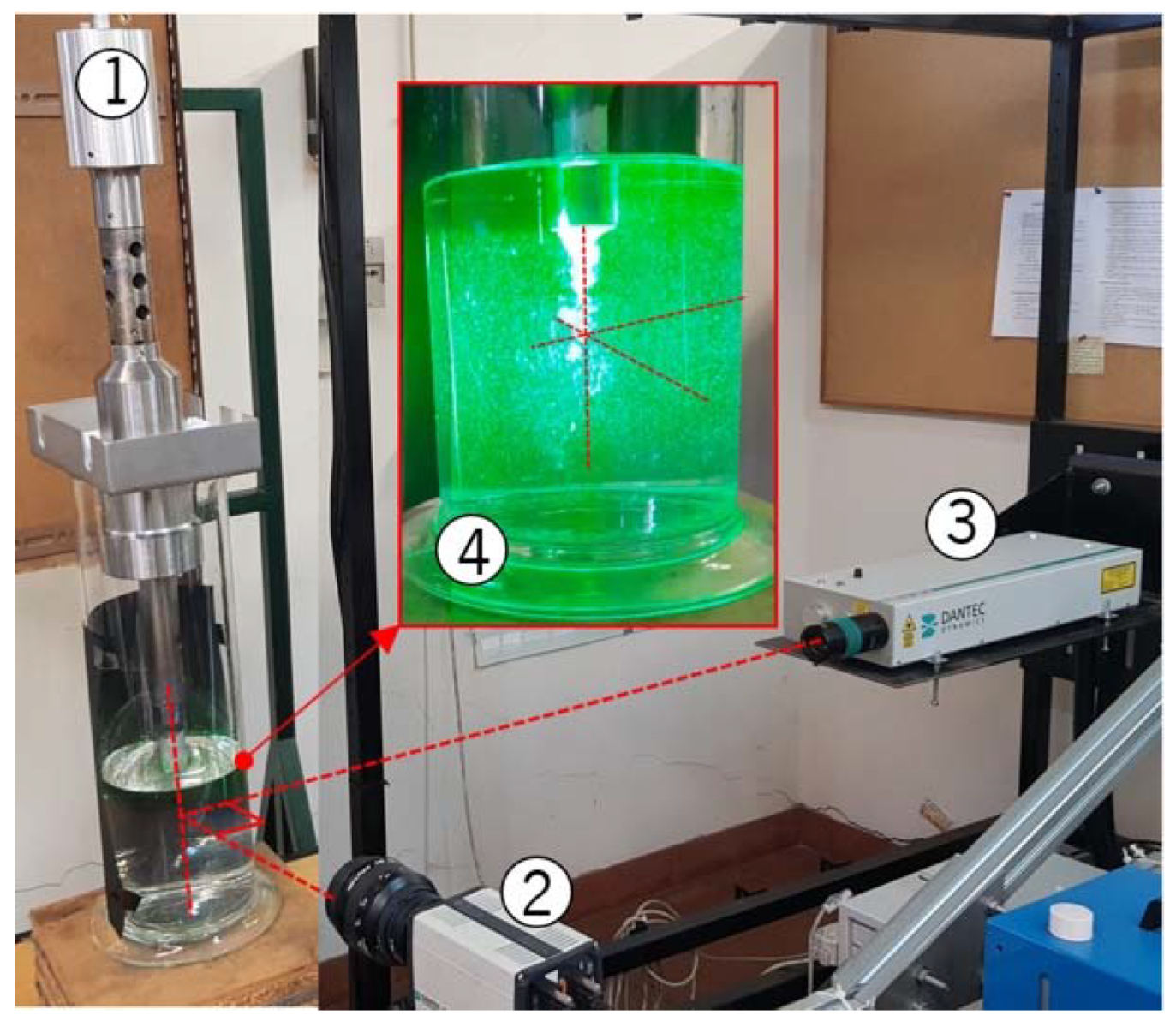
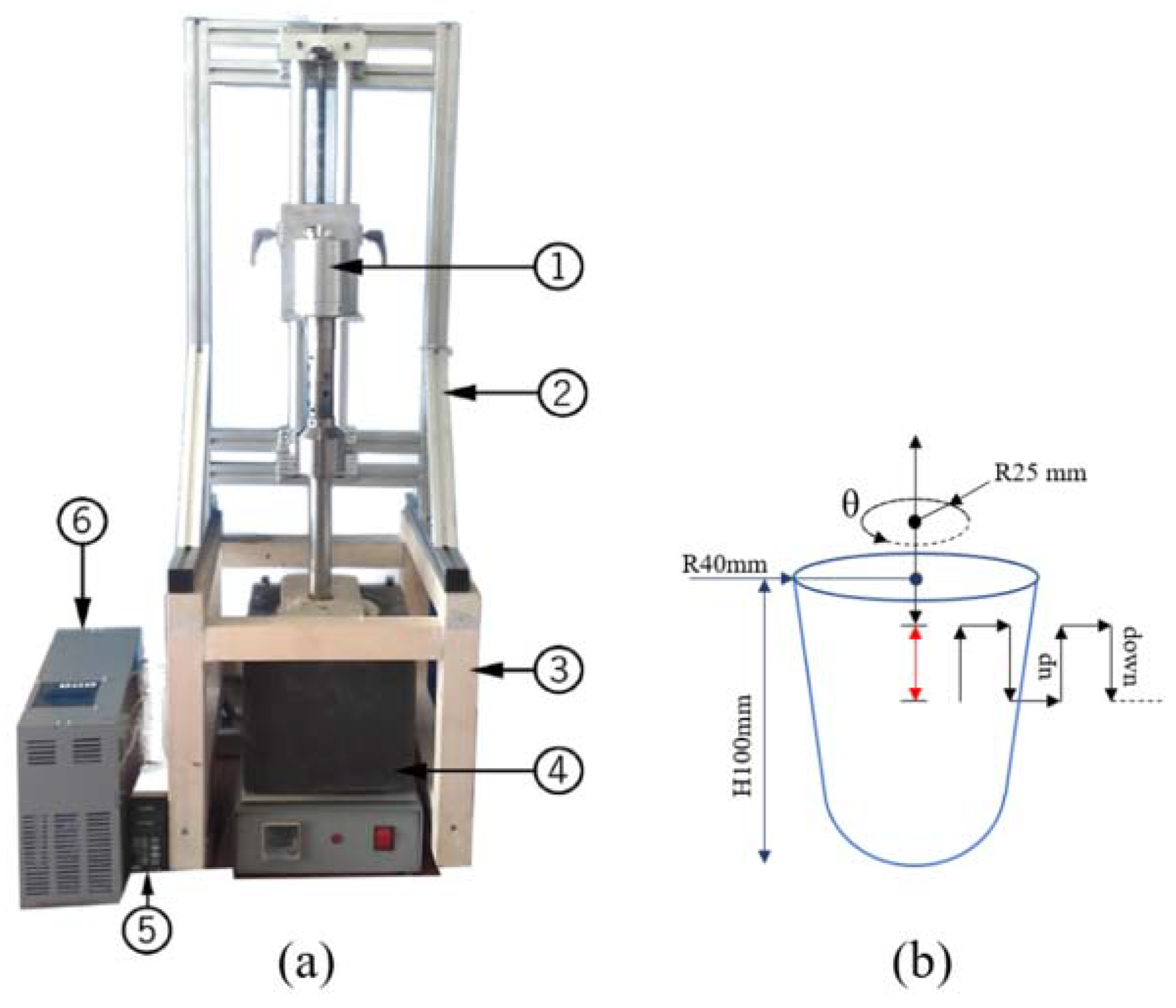
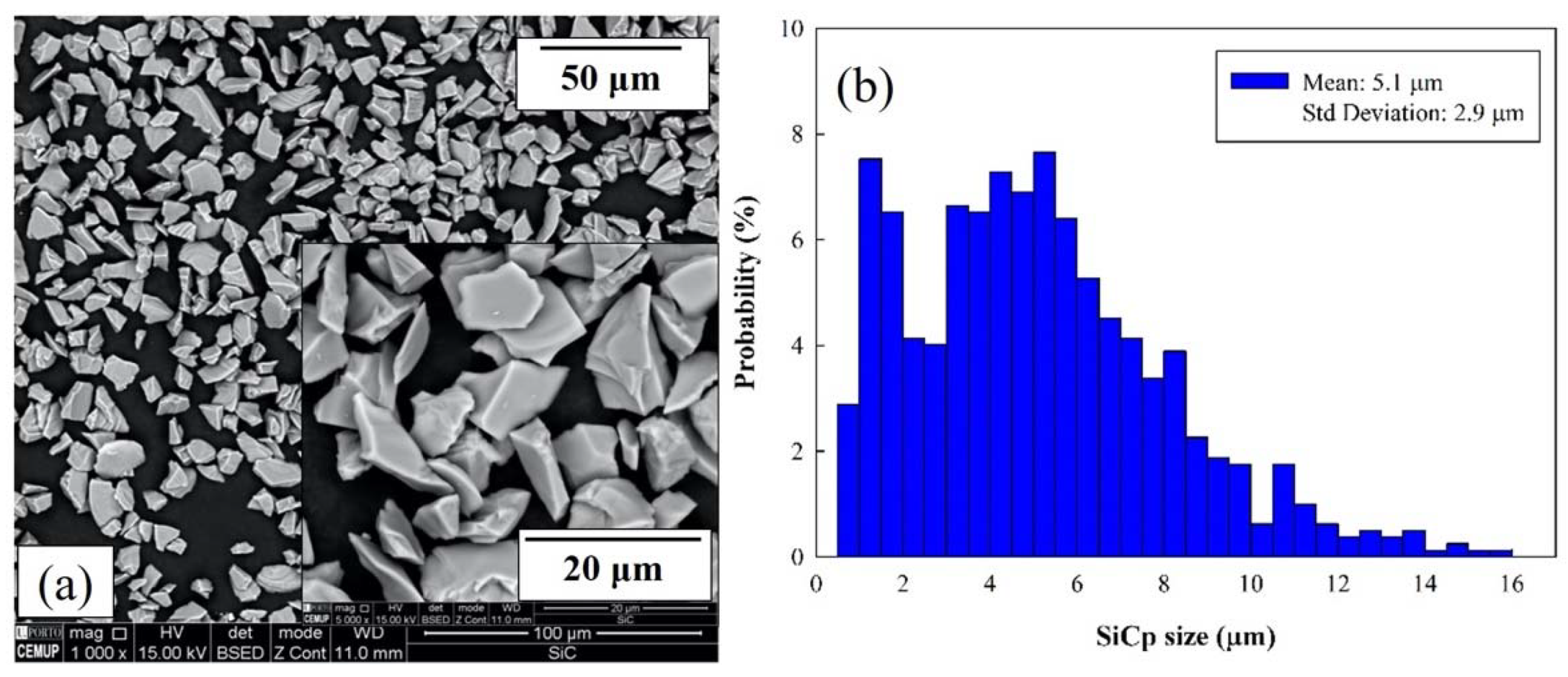
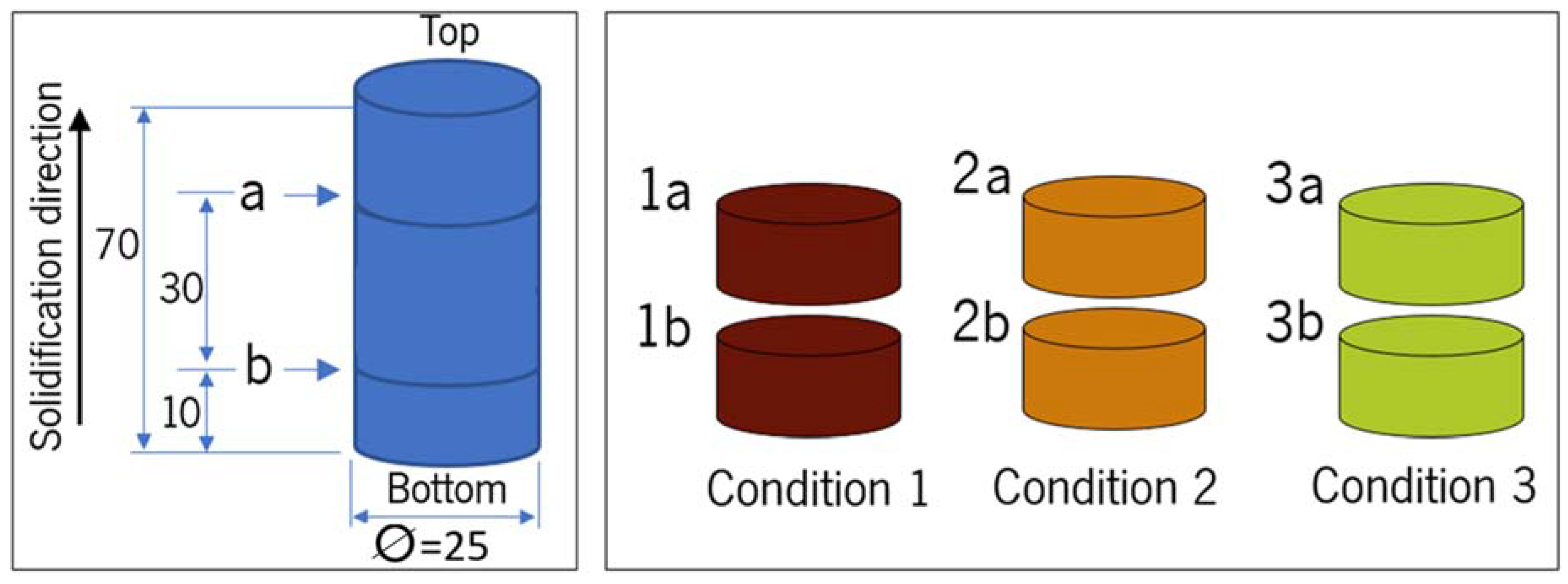
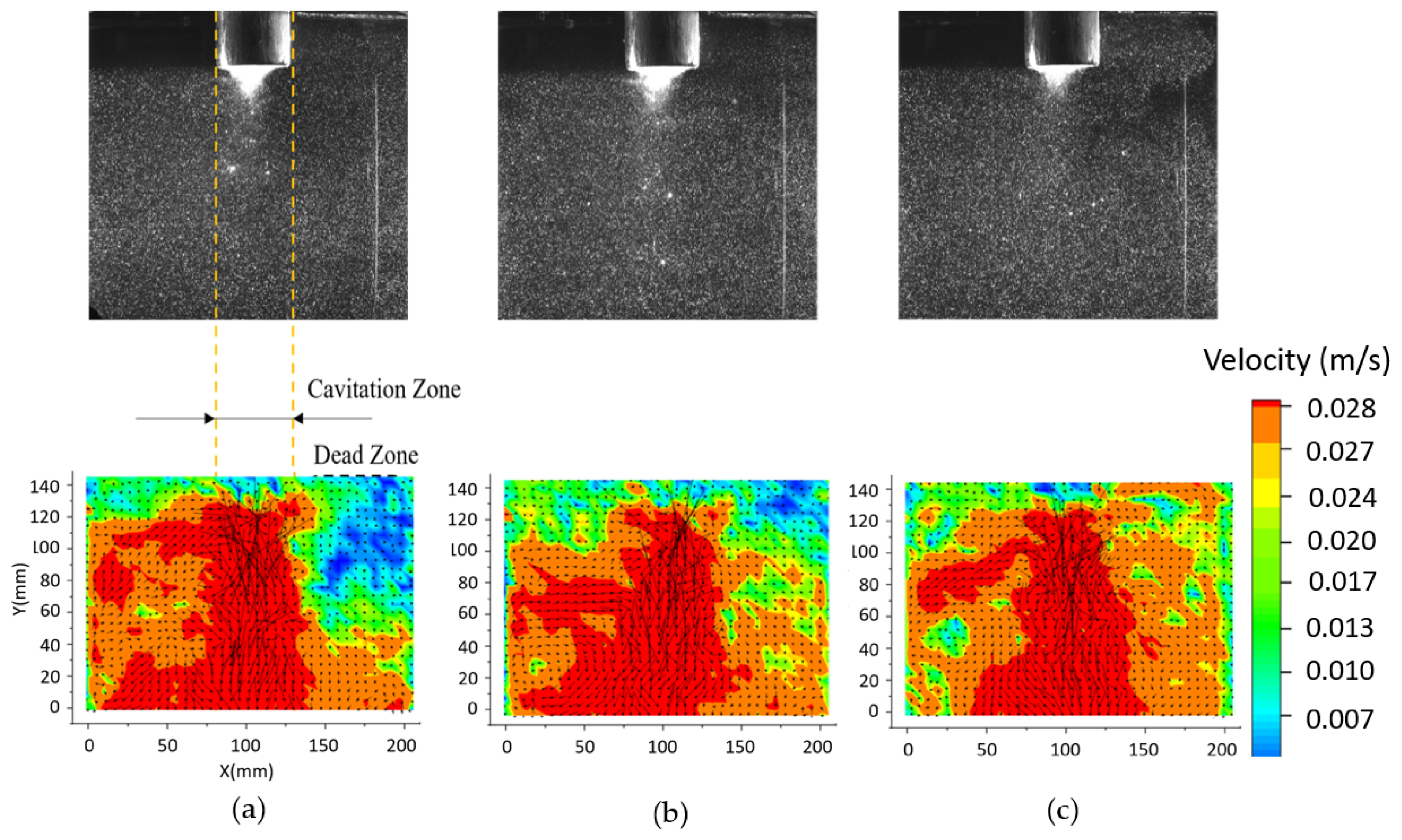
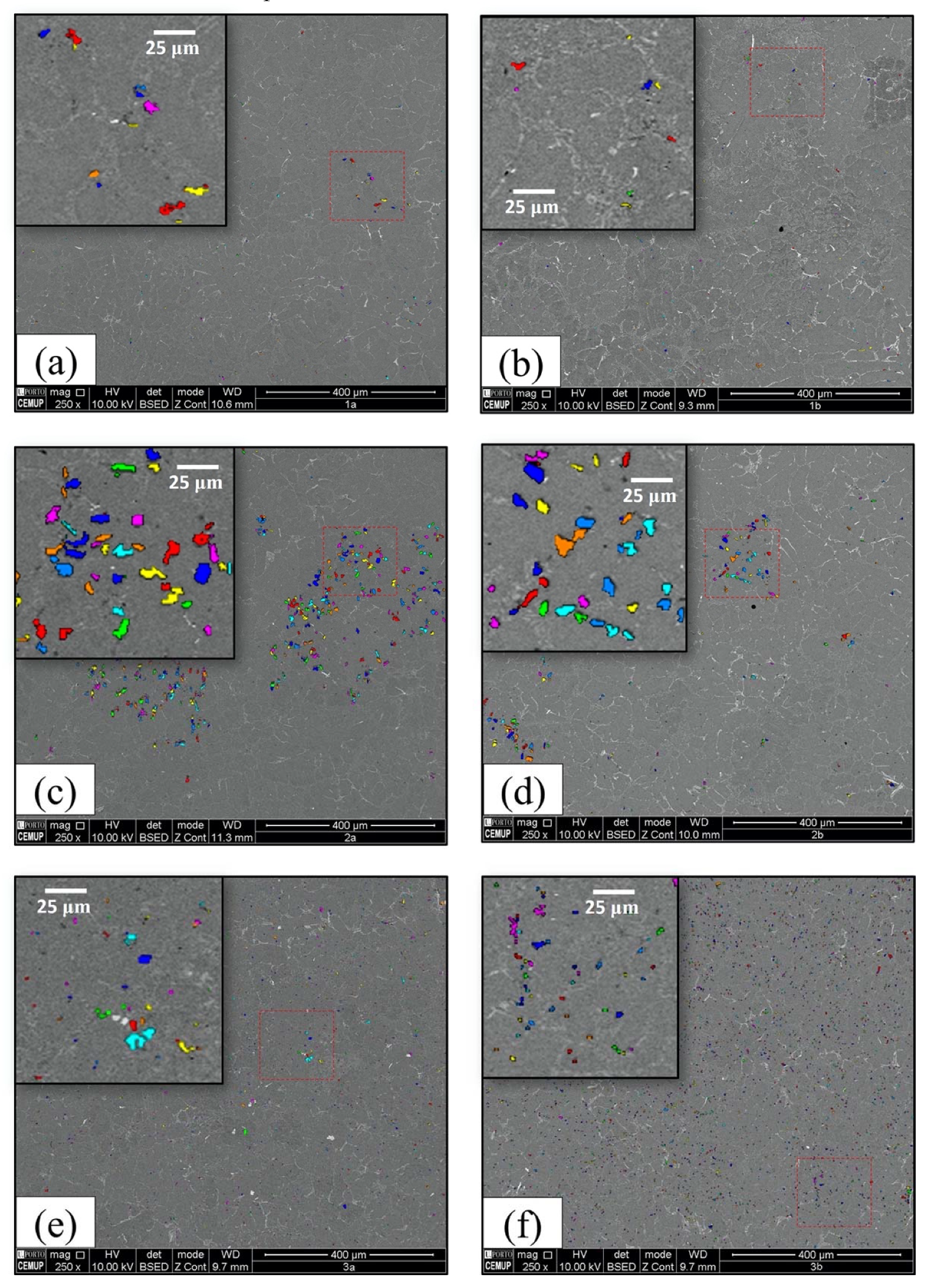
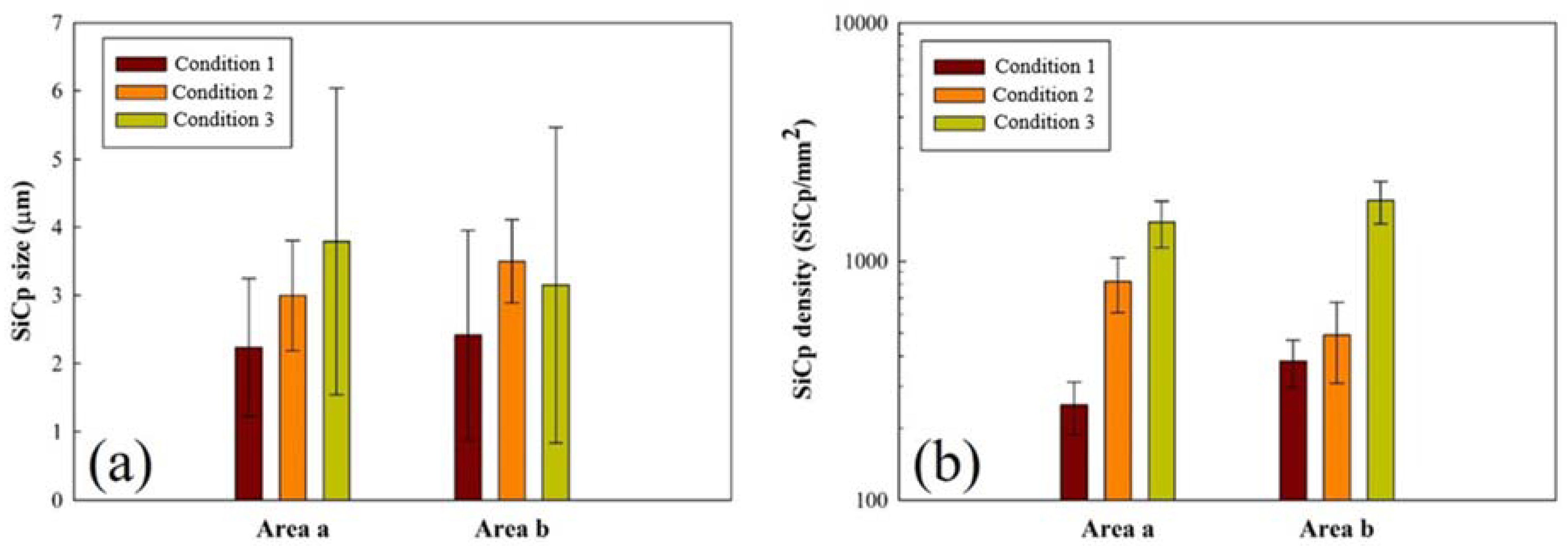

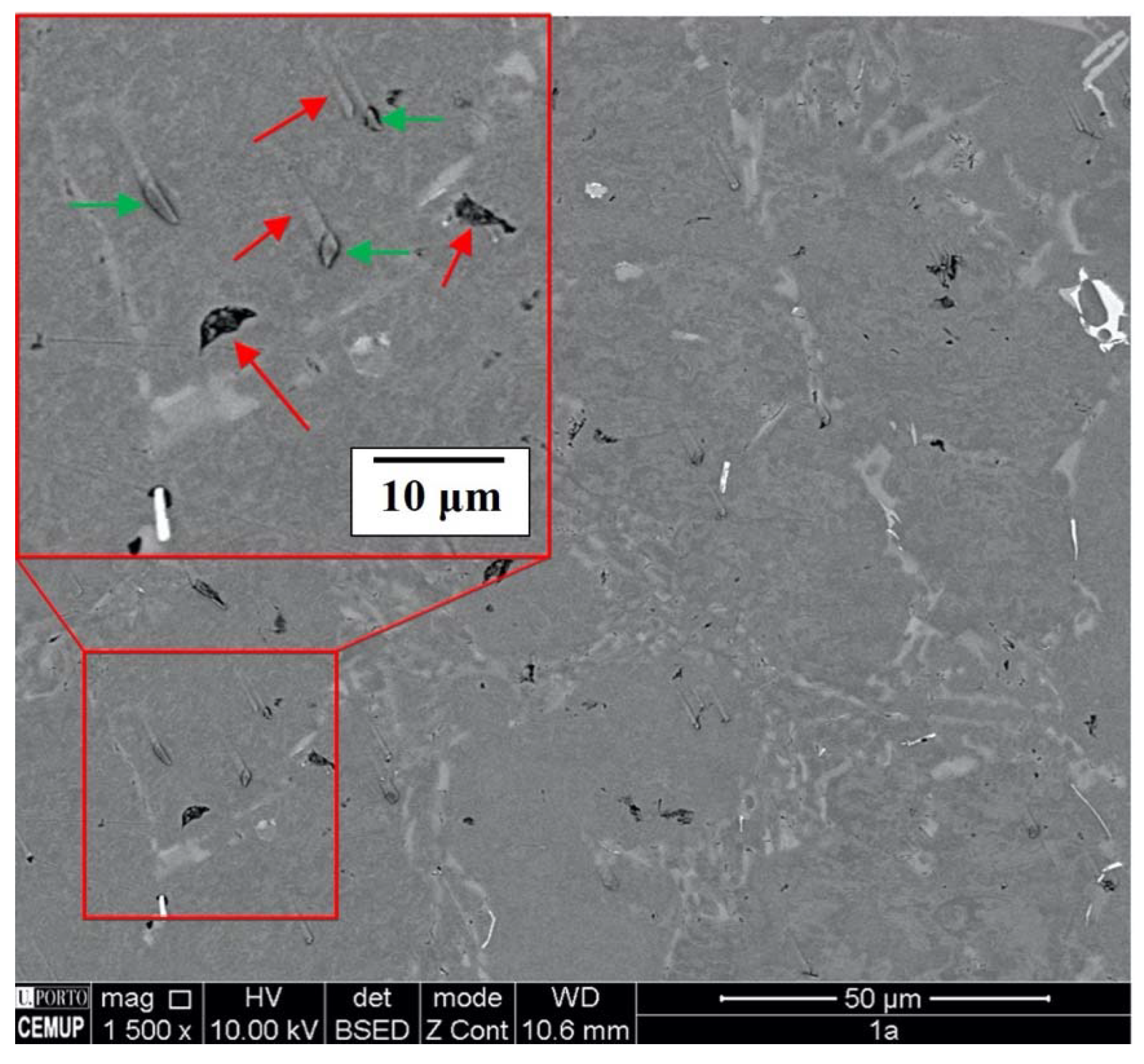
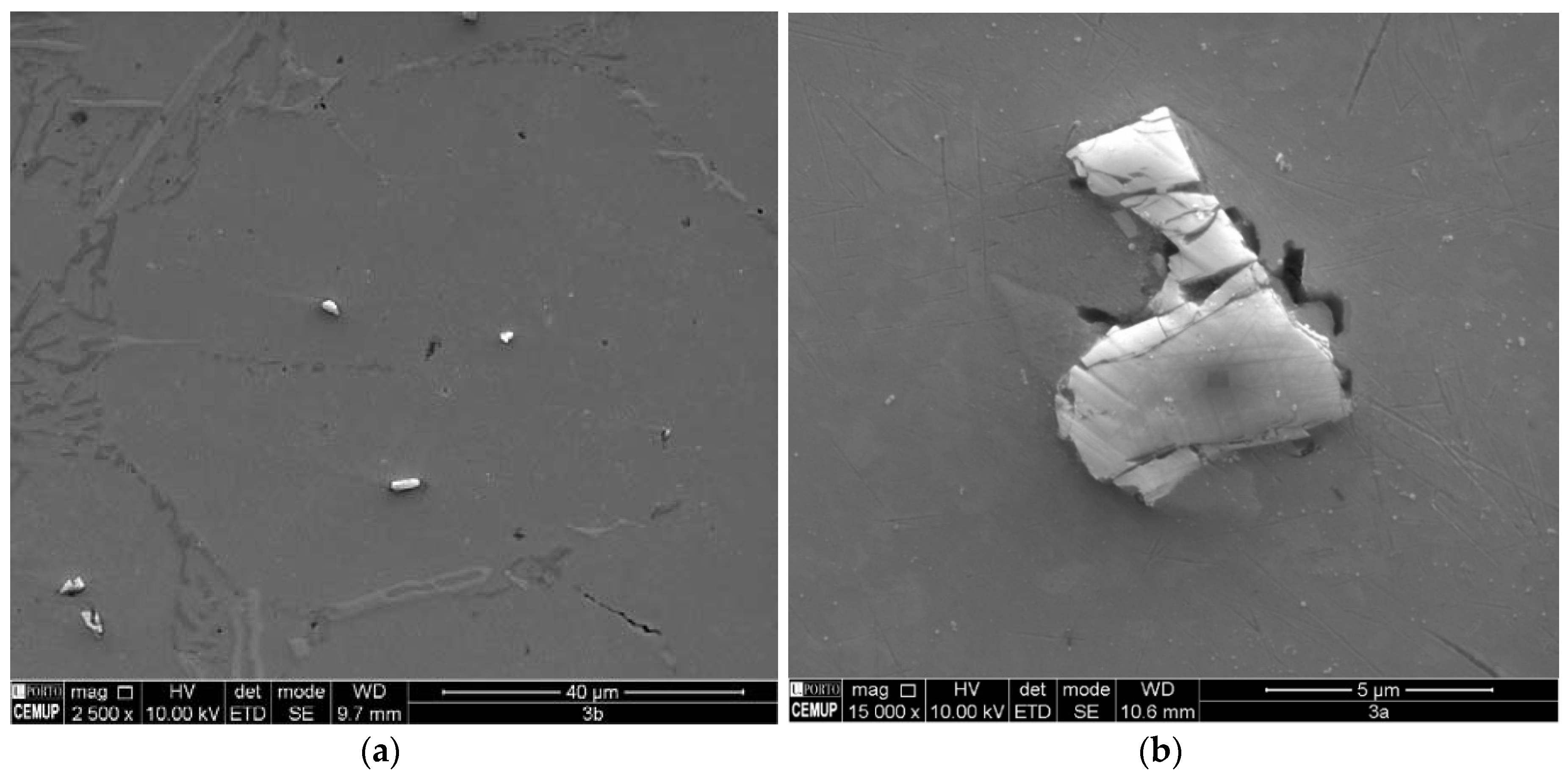
| Element | Si | Fe | Mg | Cu | Mn | Zn | Al |
|---|---|---|---|---|---|---|---|
| wt% | 7.44 | 0.13 | 0.58 | 0.07 | 0.07 | 0.05 | Bal. |
| Condition | Process | Parameters | ||
|---|---|---|---|---|
| Time (min) | Power (w) | Frequency (kHz) | ||
| 1 | m-SiCp added after melting + US | 1 | 300 (30% of 1000) | 19.8 ± 0.15 |
| 2 | m-SiCp added in semisolid state + US | 1 | ||
| 3 | m-SiCp added in semisolid state + US + Mechanical stirring | 2 | ||
© 2020 by the authors. Licensee MDPI, Basel, Switzerland. This article is an open access article distributed under the terms and conditions of the Creative Commons Attribution (CC BY) license (http://creativecommons.org/licenses/by/4.0/).
Share and Cite
Grilo, J.; Puga, H.; Carneiro, V.H.; Tohidi, S.D.; Barbosa, F.V.; Teixeira, J.C. Effect of Hybrid Ultrasonic and Mechanical Stirring on the Distribution of m-SiCp in A356 Alloy. Metals 2020, 10, 610. https://doi.org/10.3390/met10050610
Grilo J, Puga H, Carneiro VH, Tohidi SD, Barbosa FV, Teixeira JC. Effect of Hybrid Ultrasonic and Mechanical Stirring on the Distribution of m-SiCp in A356 Alloy. Metals. 2020; 10(5):610. https://doi.org/10.3390/met10050610
Chicago/Turabian StyleGrilo, J., H. Puga, V. H. Carneiro, S. D. Tohidi, F. V. Barbosa, and J. C. Teixeira. 2020. "Effect of Hybrid Ultrasonic and Mechanical Stirring on the Distribution of m-SiCp in A356 Alloy" Metals 10, no. 5: 610. https://doi.org/10.3390/met10050610
APA StyleGrilo, J., Puga, H., Carneiro, V. H., Tohidi, S. D., Barbosa, F. V., & Teixeira, J. C. (2020). Effect of Hybrid Ultrasonic and Mechanical Stirring on the Distribution of m-SiCp in A356 Alloy. Metals, 10(5), 610. https://doi.org/10.3390/met10050610







